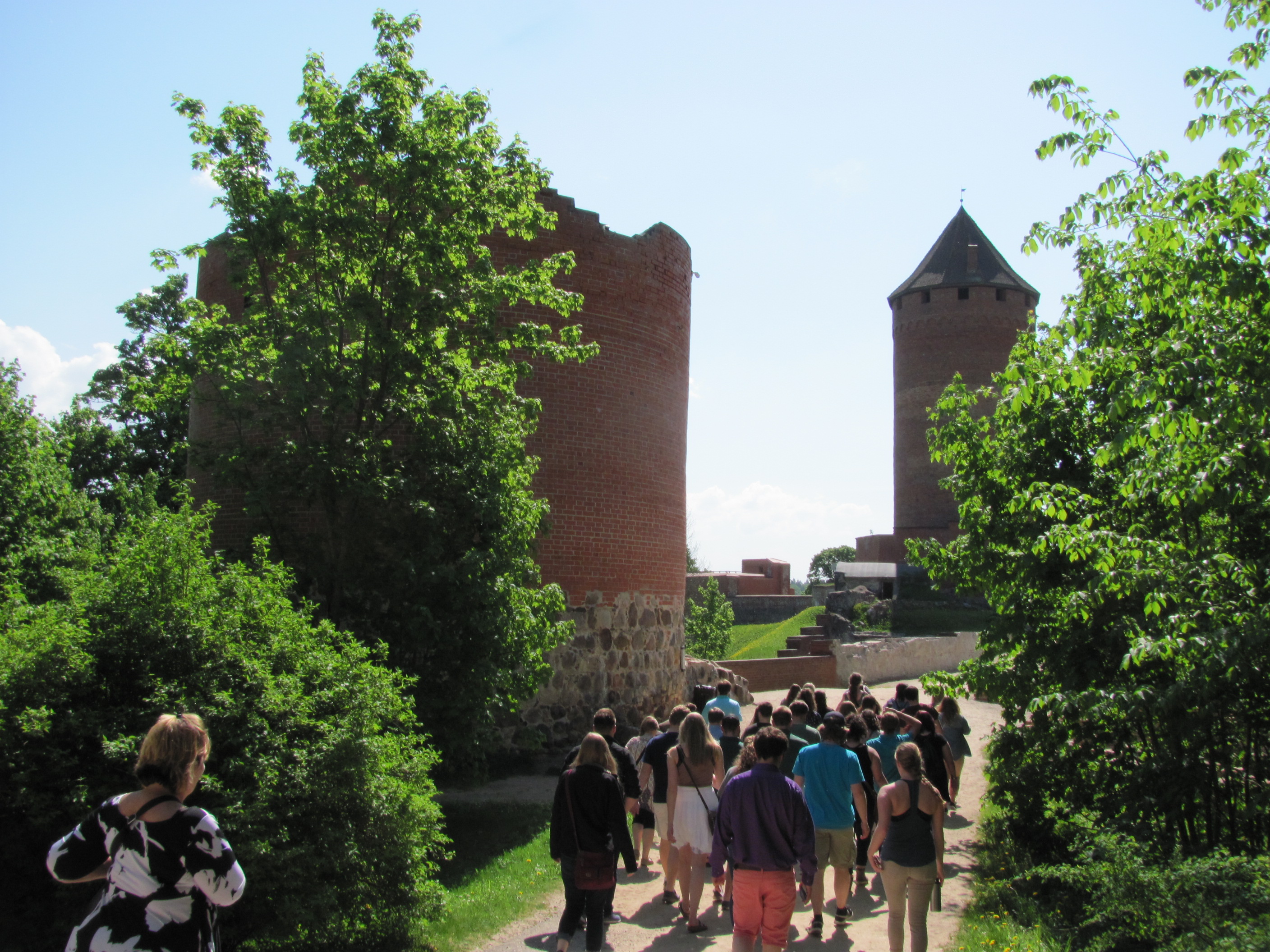by Evan Byler and Markus Babris
Thirty-two hours of walking, riding a bus, train, car and plane later, the Bemidji Choir arrived in Riga, Latvia. The group of thirty-nine people including choir members, accompanists and staff were greeted by what they described as gorgeous weather, as they walked through the cobblestone streets of old town.
The Baltic States, Estonia, Latvia, and Lithuania, the first two being the ones that the Choir toured, hold a rich singing history and strong choral culture. This, along with the fact that the public is generally smart about music in the Baltics, make it an ideal place for a choir to visit and grow their education. The countries are found in northeastern Europe, bordering Russia to the west and lying just 40 miles across the Finnish Gulf from Finland in the north.
Throughout their millennia-old history, the two regions have constantly been caught between other, more powerful political entities that fought with one another.
The Germans came and founded important cities like Riga in the 1200s and a strict Christianization of the mainly-pagan tribal region followed. The Swedish occupied next, then the Russians until 1918 when the three nations were finally granted independence. Only thirty-three years later, the Soviet Union annexed the region to have control of it for WWII. Hitler’s Germany soon came marching through the Baltic streets, and finally, the Russians regained the territory in 1944 beginning a long and devastating communist reign over the three once-independent nations.
This was a dark time for the Baltic people. At night, the Soviet secret police would often barge into family homes uninvited, give the residents one hour to pack, and deport them to Siberia where they would be divided among different work camps. Tour guides readily told these stories and the choir heard them firsthand. Publicly denouncing the Soviets as well as singing Baltic songs or anthems was strictly illegal.
One tour guide remembered how, in the late 1980s, more and more Russians were moving to the Baltics for work. This was a deliberate commission by the Soviet government that worked to diffuse Baltic culture which history remembers as the Russification of the Socialist Republics. This diffusion still impacts the populations of the three nations today, as a major percentage remains Russian-speaking.
Over time, by consequence of the Soviet leader Mikhail Gorbachev’s westernization policies of glasnost and perestroika, the Baltic nations were allowed a limited amount of freedom of speech. They used this to their advantage by protesting in various ways, the most effective being the singing of their once-banned traditional folk songs.
The ancient songs of Latvia and Estonia played an enormous part in the development of their people’s national awakening in the 19th century and still play that role today. Since the mid-1800s, both countries have hosted national song festivals every four years where over 30,000 people are involved as performers.
In 1989, two million people linked arms across the three countries and sang folk songs in a demonstration called the Baltic Way. The tour manager, Jolita Auglyte, remembers being a link of this 600 km human chain when she was a child. Another example of protest by song was when the Estonian mass choir refused to leave the national song festival until they had sung the song which soon became Estonia’s national anthem. The Russians could not stop such a massive and spontaneous display.
All these events came to be known as The Singing Revolution and led to the Baltics gaining their independence in 1991.
At one point in the tour, the choir sang “Precious Lord” on the steps of the Tallinn Song Festival Grounds where the Estonian protest had occurred.
“Walking the festival grounds with the Bemidji Choir was a powerful experience. We were but little ants tucked underneath the large amphitheater,” said choir president, Lindsey Marketon. “This trip has forever touched our lives and hearts. I believe we will take a piece of the Baltic spirit with us wherever we go and wherever we sing, because now we have even stronger evidence that music can truly change the world.”
The choir began their first day with a bus/walking tour. Tourists of the medieval city bustled around while churches first erected in the early 13th century loomed overhead. After two concerts in Latvia, the group drove through the countryside across the border to Tallinn, Estonia where they stayed for the last half of the trip.
With one concert left, the conductor, Dr. Dwight Jilek, assistant professor of music at BSU, fractured his dominant conducting arm. Jilek stepped off the bus right after the group arrived at their hotel, tripped on a curb, and hit the sidewalk. A taxi ran him, Dr. Sarah Tarutis (the group’s nurse from BSU), and Auglyte to the hospital while the rest of the group waited.
In the morning, Jilek told the choir that the concert was still on but that they couldn’t sing like their conductor had a broken arm. The program they gave that night in the gothic Tallinn Dome Church was the last time several of the seniors would ever sing with the Bemidji Choir, and emotions soared.
Zachary Swank said, “My last concert with the Bemidji Choir was as exciting and fulfilling as I could have possibly imagined. I’ve never cried that hard in front of that many people.”
For the choir’s last dinner in Europe, they feasted at a medieval restaurant called Olde Hansa. Complete with live, renaissance music, cheesecake and coffee, the choral members thought it was a delightful way to wrap up their trip to the Baltics—forgetting that they still had the thirty-some hour trip home. Nevertheless, they’ll always cherish their memories of choral music, churches and cheesecake.




